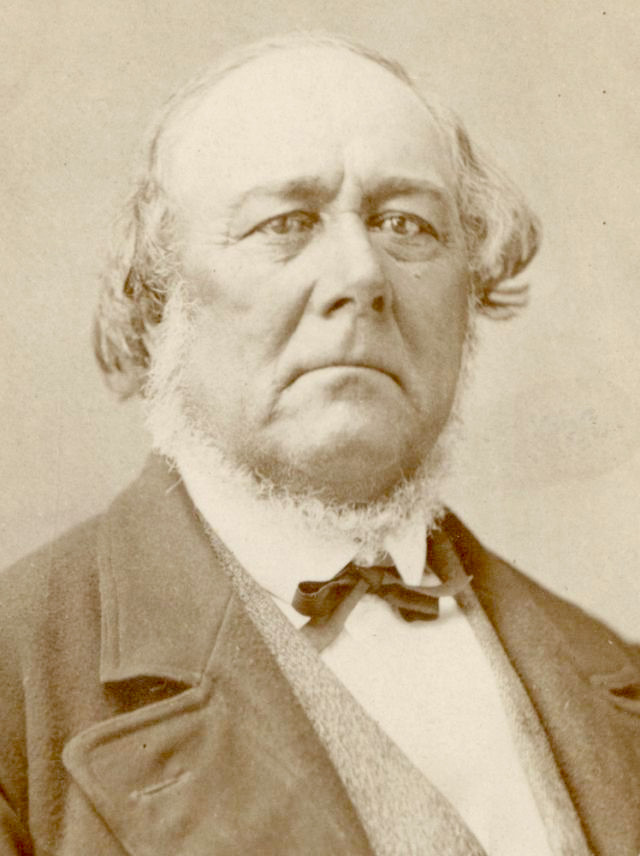Charles C. Rich
(1809–1883)


D&C 124:132
By Susan Easton Black
In 1829 Charles, a schoolteacher, farmer, and cooper, was viewed as an “honest young man but made no pretensions to religion.”1 It was news of the Book of Mormon that awakened his curiosity to religious matters. Charles penned of studying the Book of Mormon and asking the Lord in prayer to know if the book and the Restoration message were true. He wrote, “The spirit would then whisper, you have not been baptized, you have not obeyed the Gospel, but when I had complied with the law, then I … obtained a perfect knowledge of the truth, and could then bear a testimony of it to all the world.”2
In the spring of 1832, Charles was baptized in Tazewell County, Illinois, by George M. Hinkle and ordained an elder by Zebedee Coltrin. Two years later, he volunteered to march with Zion’s Camp to Missouri. When camp members were dismissed to return to their homes, Charles journeyed on to Kirtland. In that city of the Saints, he was ordained a high priest by Hyrum Smith and received his patriarchal blessing from Joseph Smith Sr. In his blessing, Charles was promised that “Satan would have no power over him … [and] He would gather thousands to Zion … like Nathaniel of old.”3
One of the more interesting accounts of his life was the courting of Sarah DeArmon Pea. Without ever having met Sarah, Charles wrote the following letter on March 23, 1837:
Miss Sarah Pea. It is with pleasure that I at this time pen a few lines to you, although a perfect stranger to you however I trust that these few lines may be received by you and may be the beginning of a happy acquaintance with you. I will now let you know the reason of my boldness in writing to you. It is because Elder G. M. Hinkle and others have highly recommended you as a Saint of the Last Days as being worthy of my attention. I think I should be happy to get a good companion such a one as I could take comfort with through life and such a one as could take comfort with me. … If these lines is received with the same feeling that I write them I trust that you may be single and unengaged. … So no more at present but I remain yours with the best of respects.
from Charles C. Rich4
The courtship of Charles Rich and Sarah Pea led to marriage on February 11, 1838, at Far West, Missouri. Within months of their marriage, mobs threatened Latter-day Saints residing in Far West. Charles and Sarah were forced to flee from the state of Missouri due to a government-sanctioned extermination order. They found safety in Quincy, Illinois, before moving on to Nauvoo.
In Nauvoo, Charles became very prominent in local affairs. He served on the Nauvoo High Council, in the Nauvoo stake presidency, and on the Nauvoo City Council. He was a captain and later a brigadier general in the Nauvoo Legion and also a regent of the University of Nauvoo.
In 1846 Charles joined the Latter-day Saint exodus from Nauvoo to the Territory of Iowa. He traversed the loess hills of Iowa before reaching the temporary encampment of Mount Pisgah, where he was called to serve as the presiding elder. In 1847 he relinquished his position in Mount Pisgah to join other Latter-day Saints on their pioneer trek to the Salt Lake Valley. In the valley, he served as a counselor to Uncle John Smith in the presidency of the Salt Lake Stake.
On February 12, 1849, Charles was called to the Quorum of the Twelve Apostles. From 1849 to 1883, he faithfully served as a member of that quorum. Among his many contributions was his leadership in pioneering the Latter-day Saint settlement of San Bernardino, California. He also served as a general in the Utah Territorial Militia, represented Davis County in the territorial legislature, and presided over the European Mission.
In 1863 Charles led several Latter-day Saint families to the Bear Lake region. He was honored when the Saints named their settlement St. Charles and the newly formed county Rich. He worked side by side with the settlers to transform the bare land into a productive garden spot. After six years of faithful service to the Saints in the Bear Lake region, Charles was released and invited to return to Salt Lake City. He appreciated the invitation but chose to spend his remaining years among friends in the Bear Lake region.
In October 1880 he suffered the first of a series of paralyzing strokes. He lost his ability to speak and to use his legs before his death on November 17, 1883, at his home in Paris, Idaho, at age seventy-four.
1. Hosea Stout Autobiography, 244, in Leonard J. Arrington, Charles C. Rich, Mormon General and Western Frontiersman (Provo, UT: Brigham Young University Press, 1974), 14.
2. Charles C. Rich, “Blessings the Result of Obedience to Law, etc., “Journal of Discourses, 19:250.
3. Patriarchal Blessing of Charles C. Rich, in H. Michael Marquardt, Early Patriarchal Blessings of The Church of Jesus Christ of Latter-day Saints (Salt Lake City: The Smith-Petitt Foundation, 2007), 68–69.
4. Letter of Charles Rich to Sarah Pea, March 23, 1837, in Arrington, Charles C. Rich, 56.
Additional Resources
- Biography of Charles C. Rich (josephsmithpapers.org)
